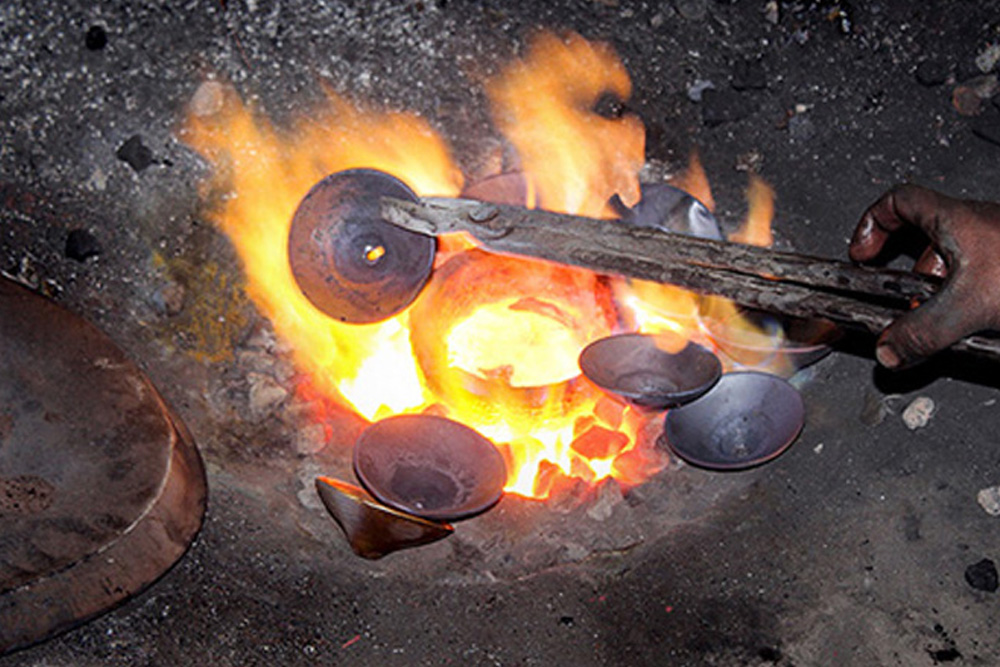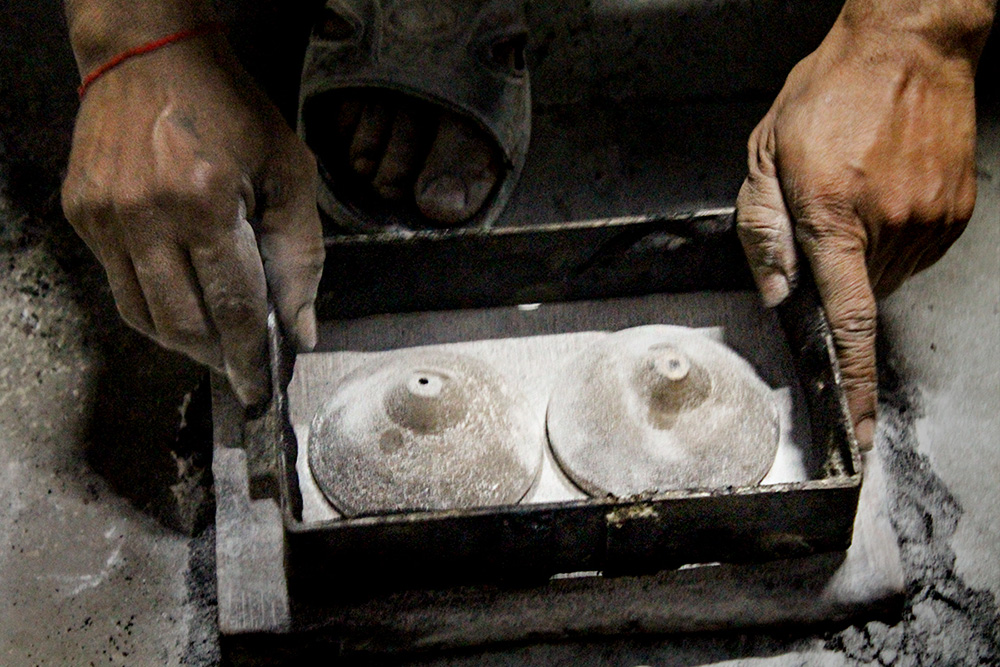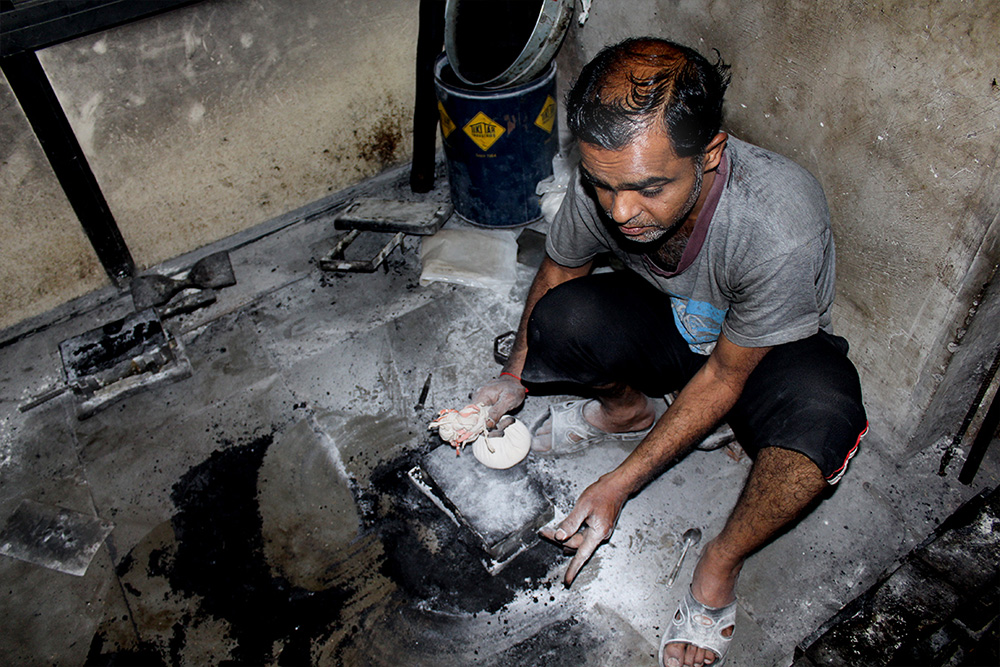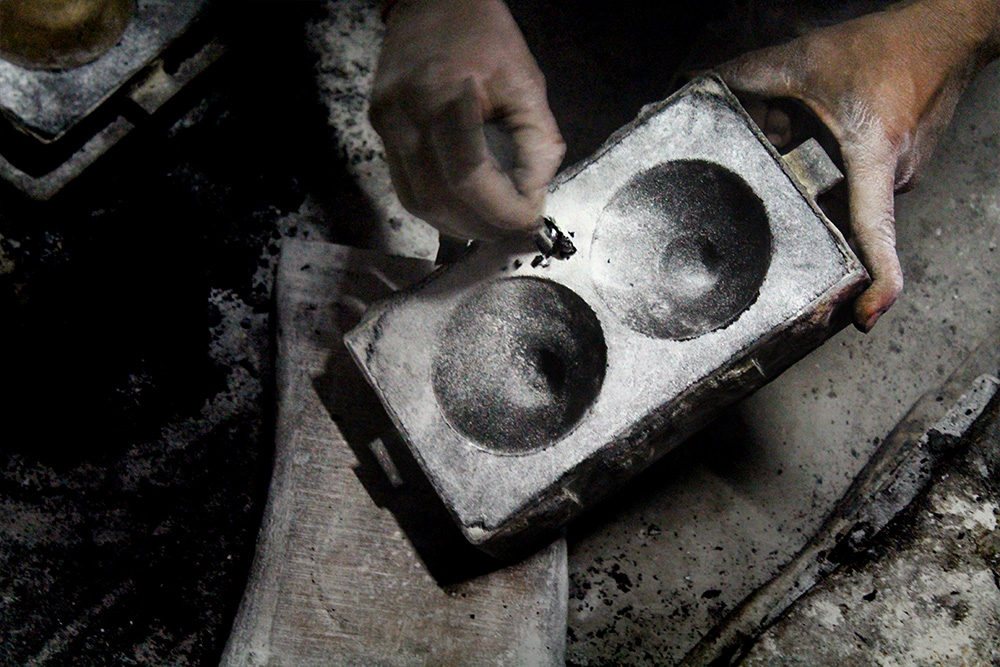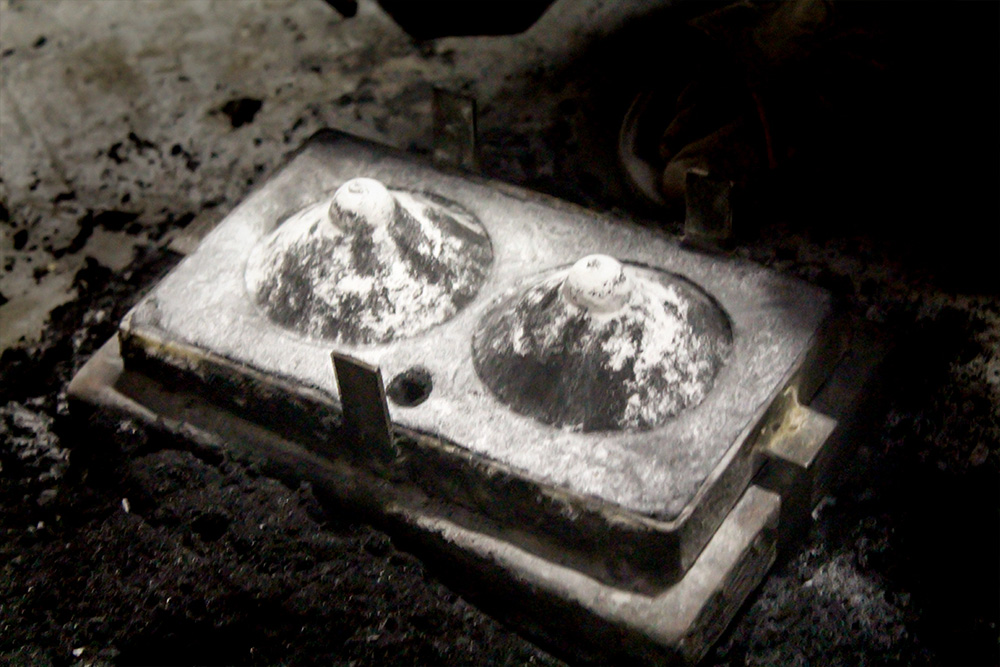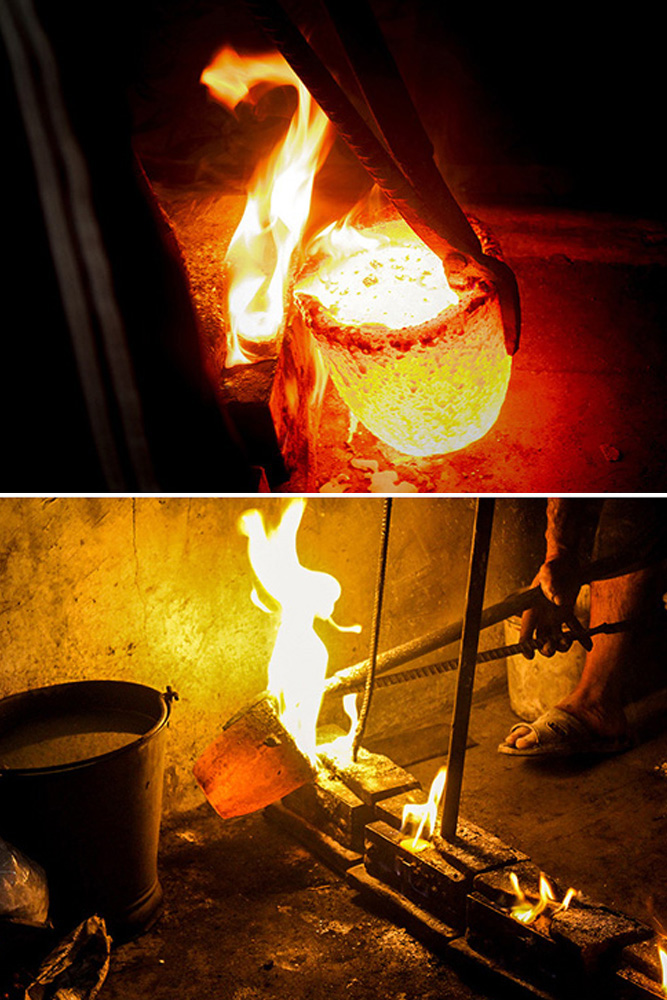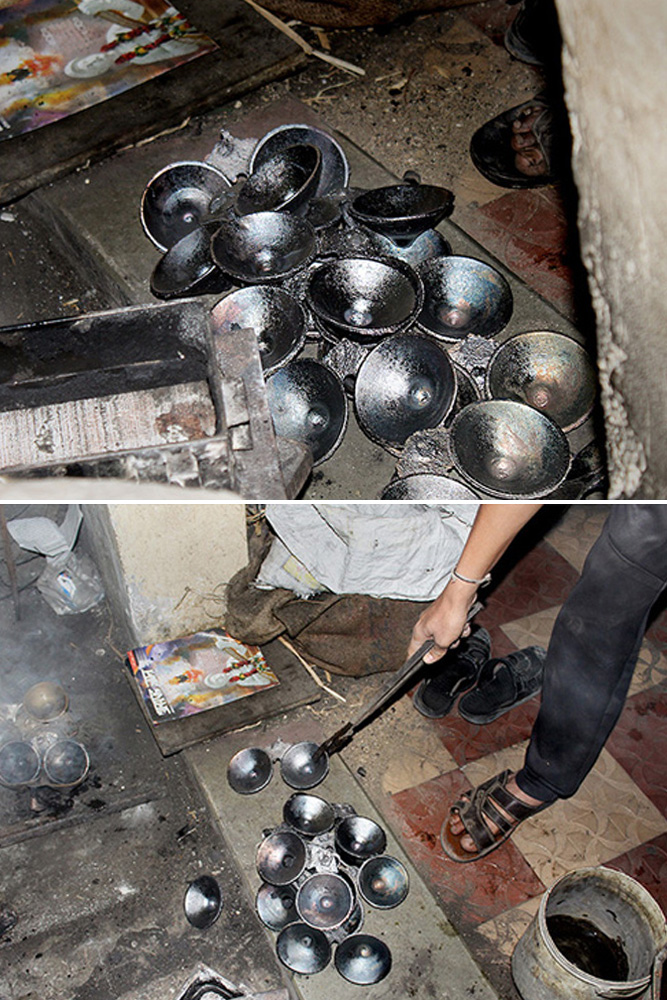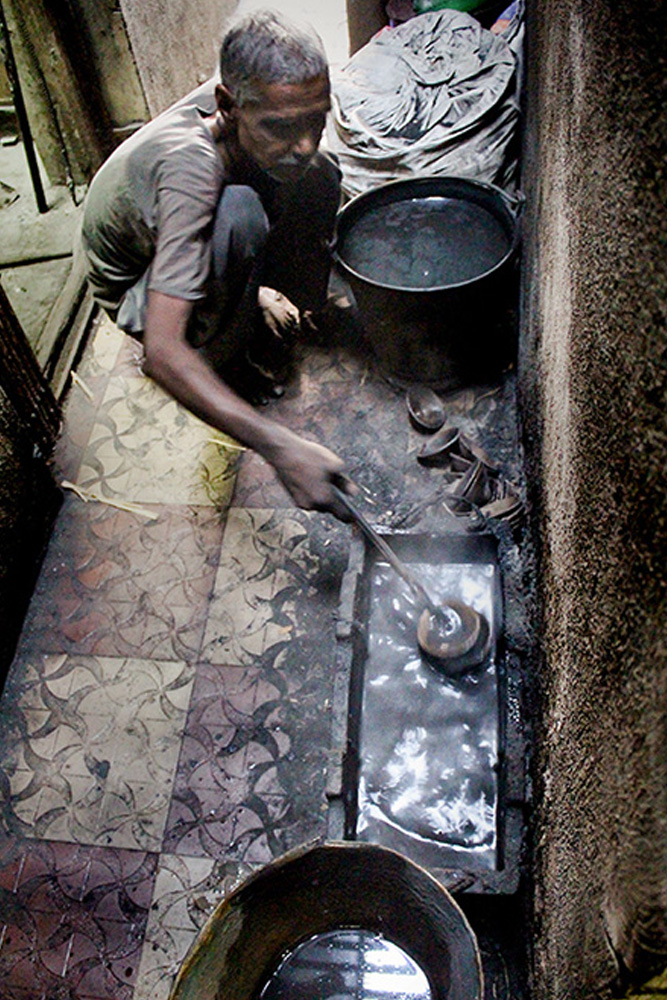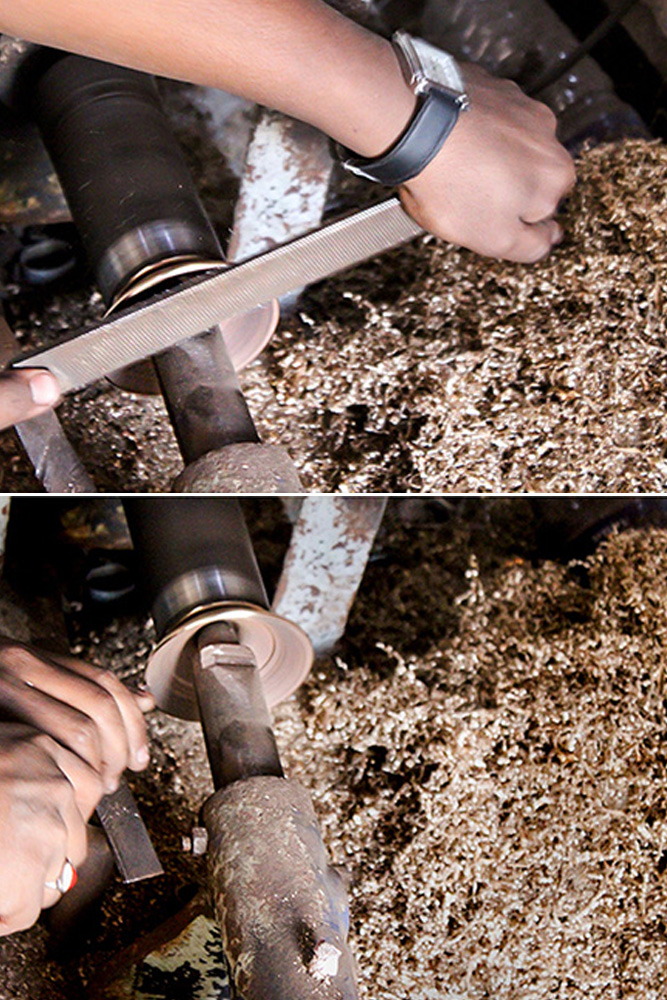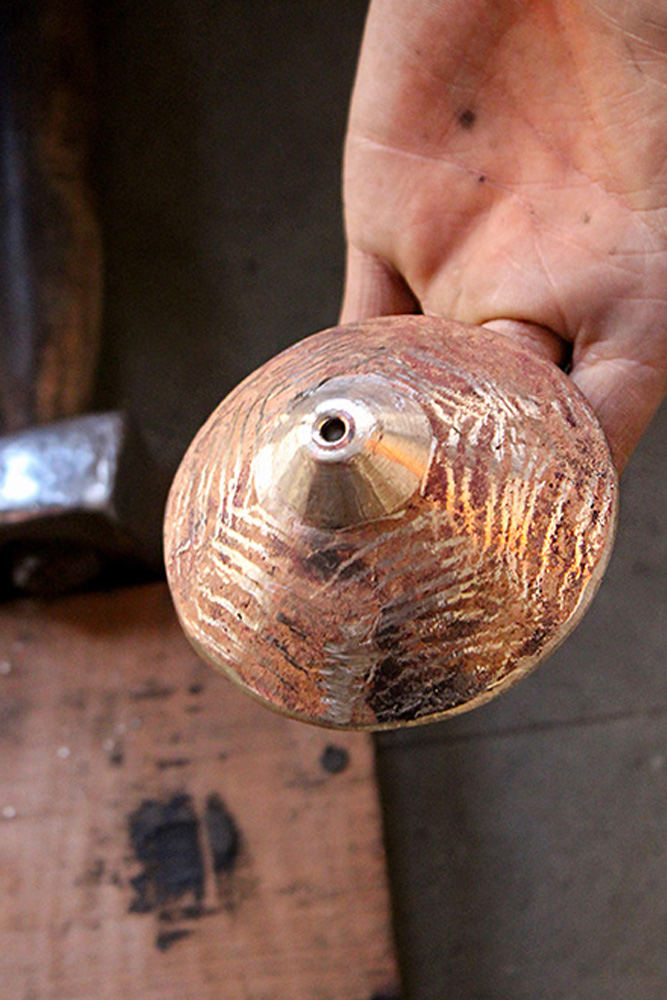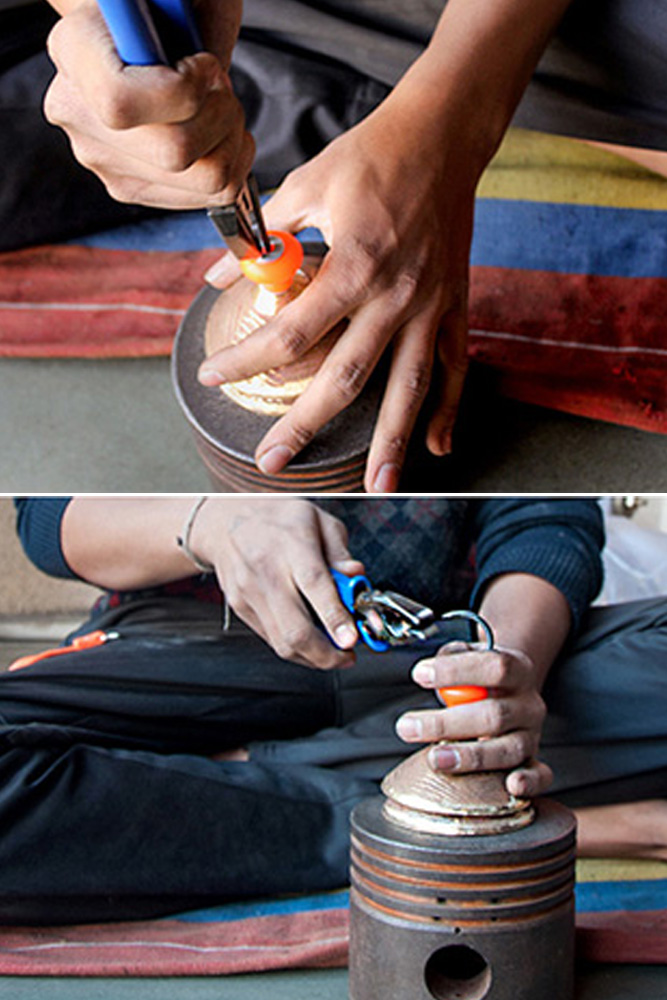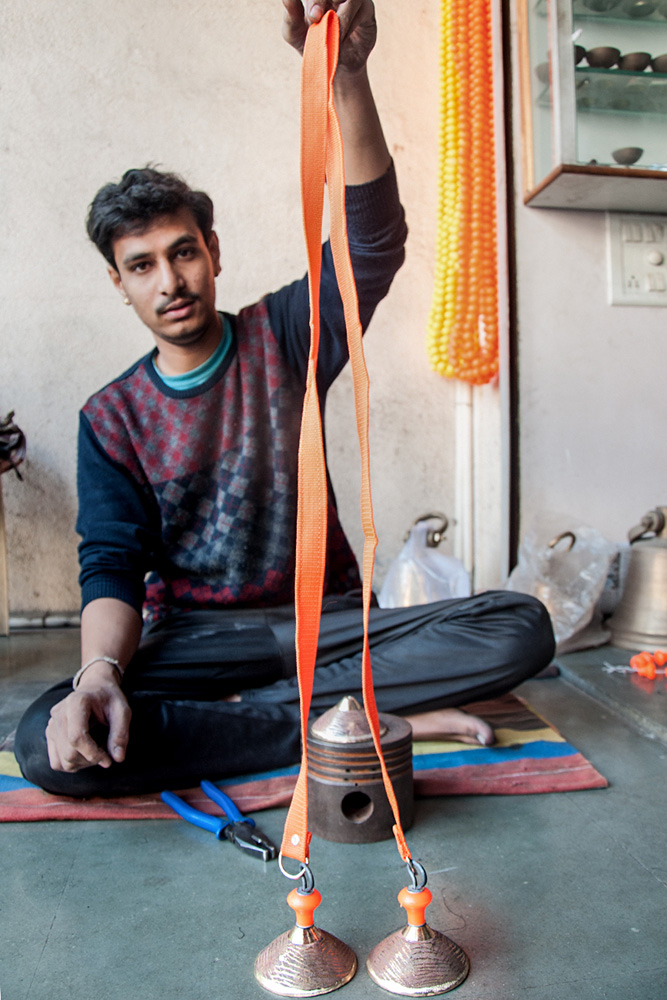Design Gallery
Taal Making - Ahmednagar, Maharashtra
Musical Instrument Making
by
Taal (cymbal) is a traditional musical instrument made from metal, mainly copper. This instrument originated in India is a usual accompaniment for devotional performances and music. Its ease of usability and inexpensive owning make it a favorite among experts as well as amateur musicians. Taals are known in different names across different parts of the country and hold strong cultural importance, especially in Gujarat and Maharashtra. Here Taals are played during aartis, bhajans, dayro, and santvani.
This perfectly tuned handmade instrument is a masterpiece of skilled artisans who design by casting method or by beating the metal into the required shape. The latter is a pretty primitive style, while casting is the one that is widely practiced nowadays. The product is often regarded for its high durability and earth-friendly nature. Artisan Mr. Shubham from Ahmednagar, part of Maharashtra, has been making high-quality cast Taal for years. The skill that was passed to him from his father is now shared with his students and employees to preserve the craft for centuries.
For more details:
https://www.dsource.in/resource/taal-making-ahmednagar-maharashtra












